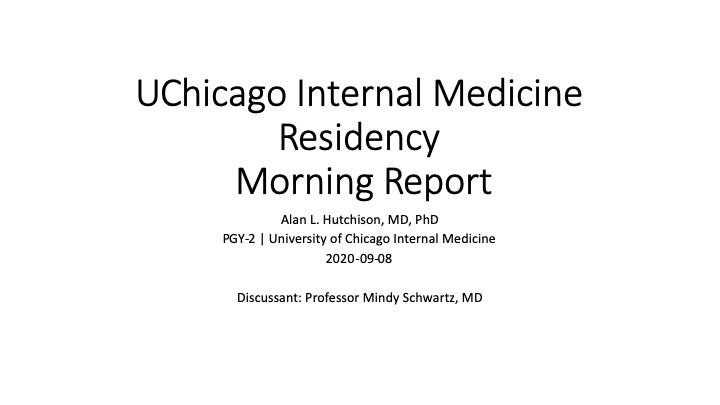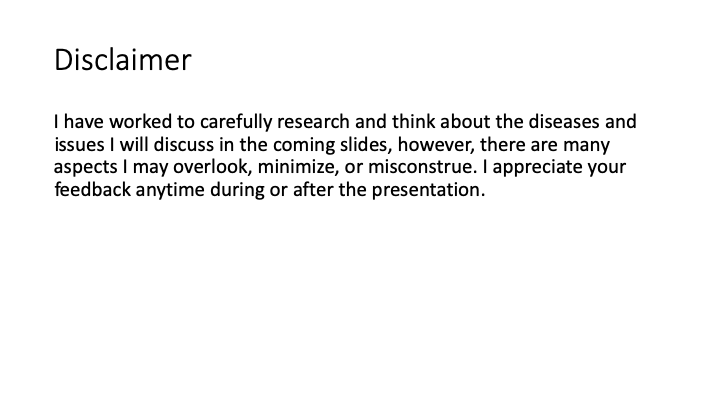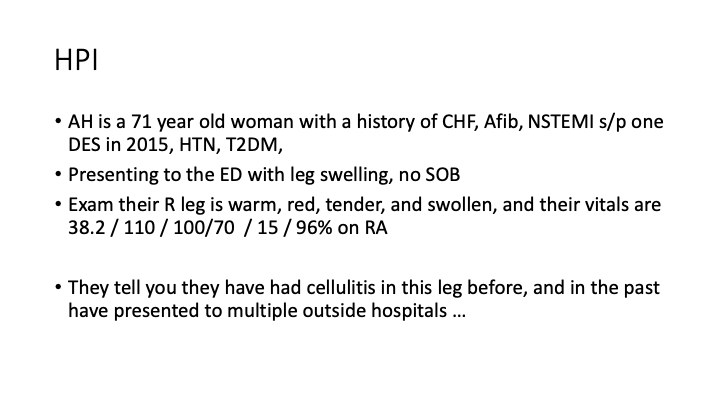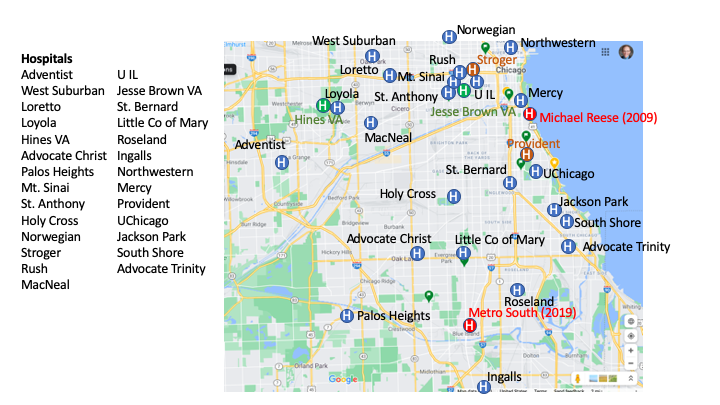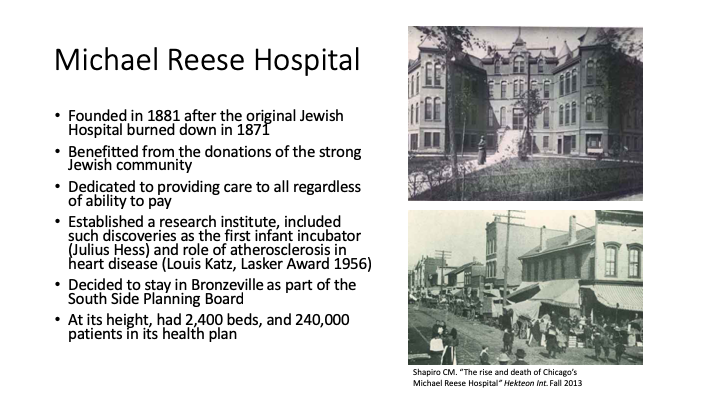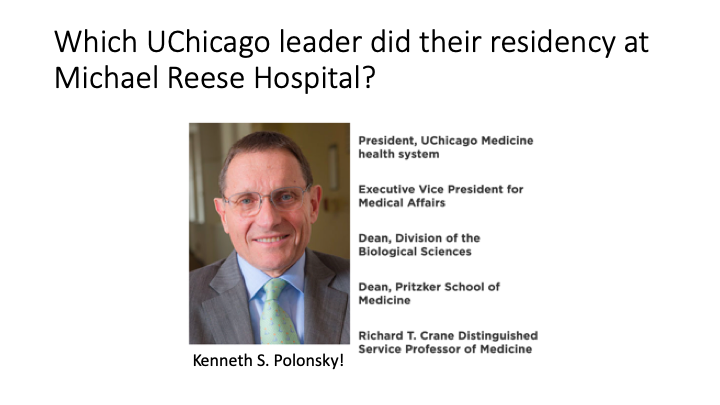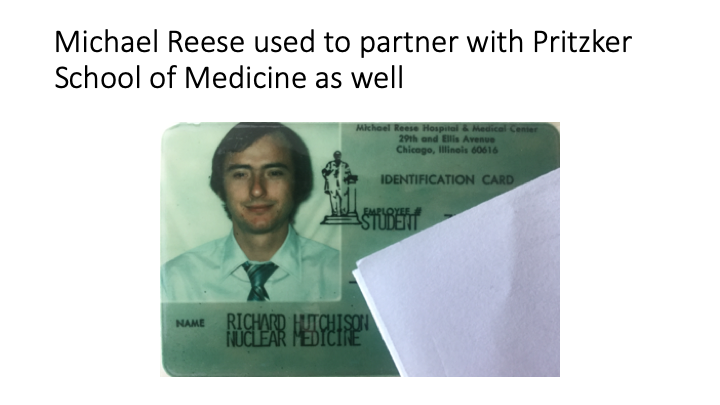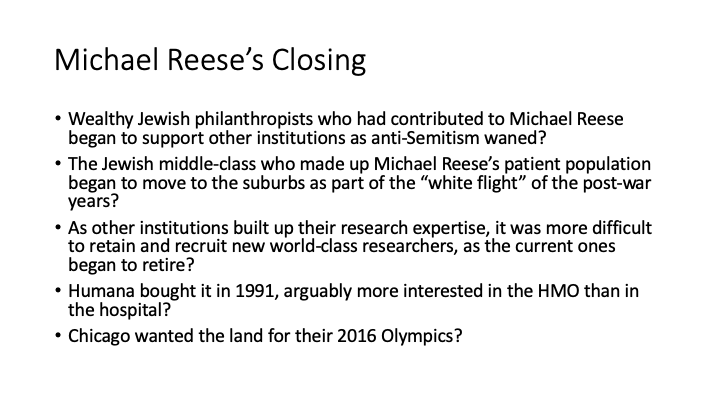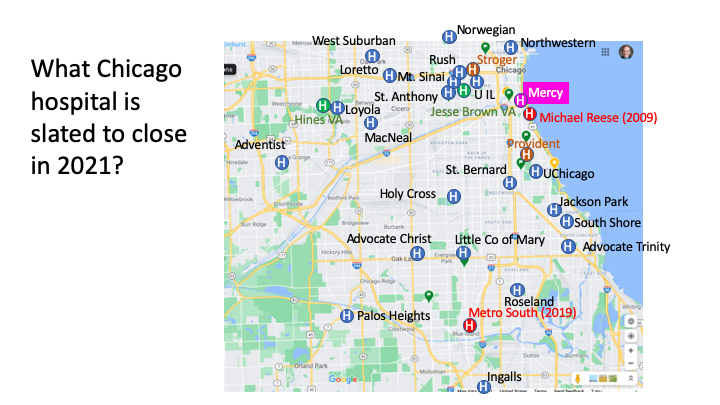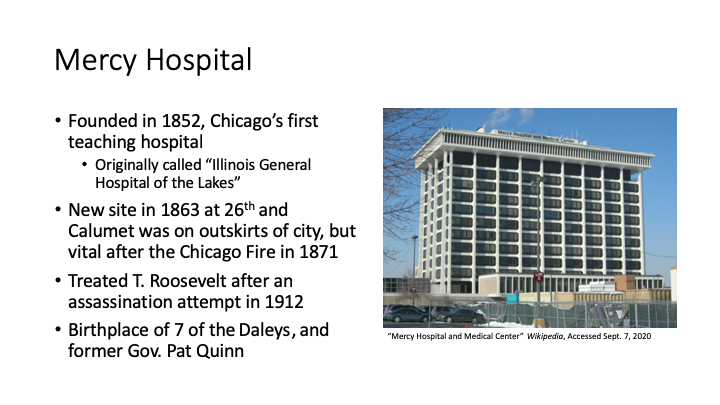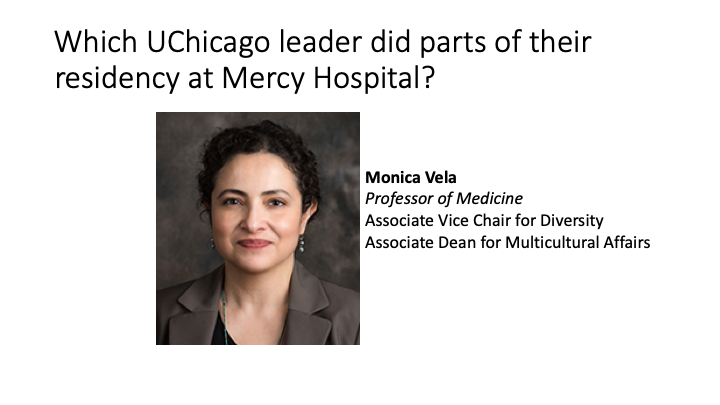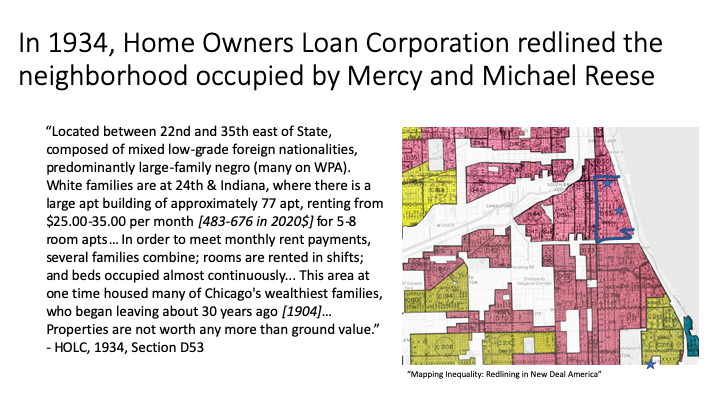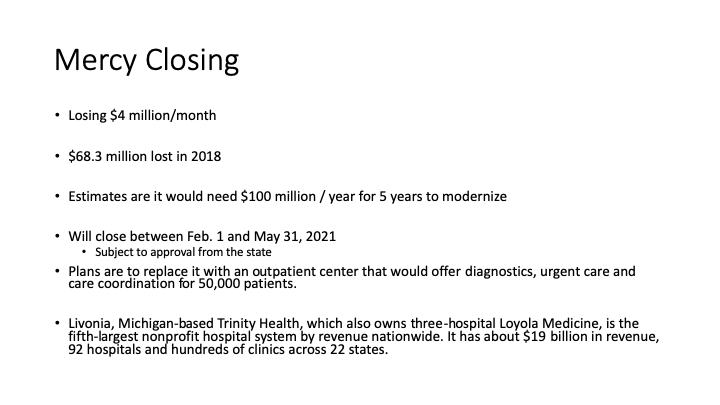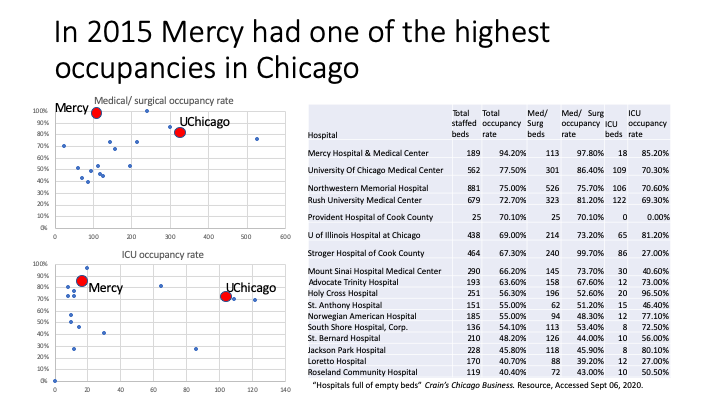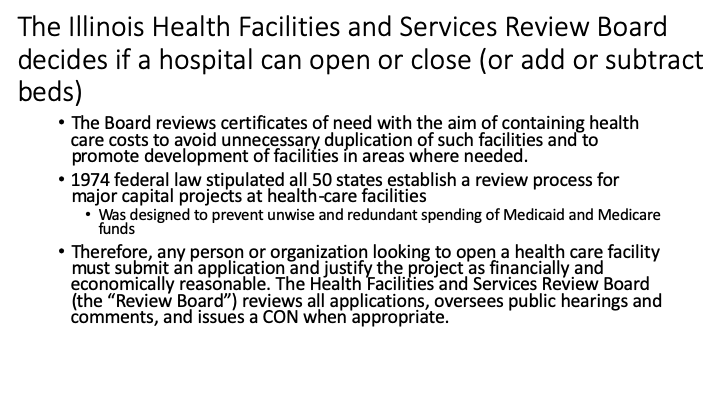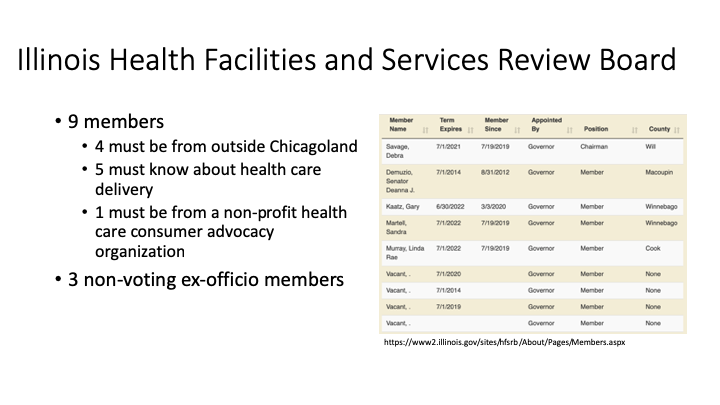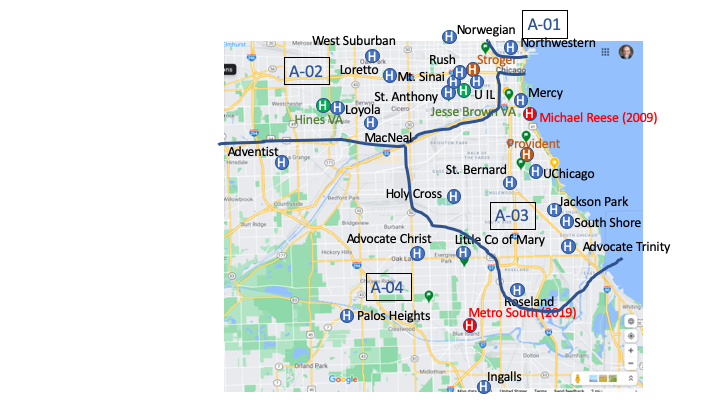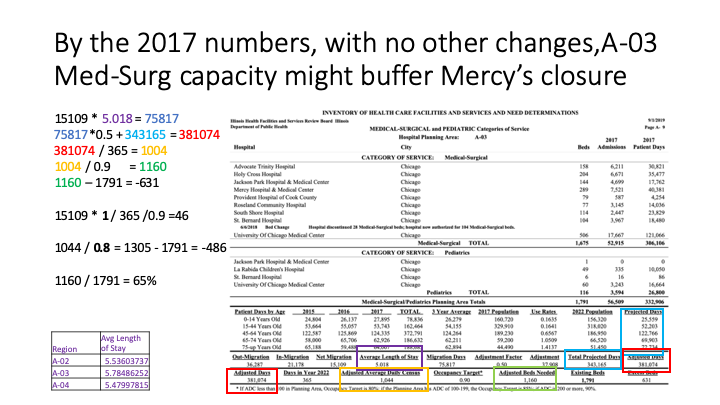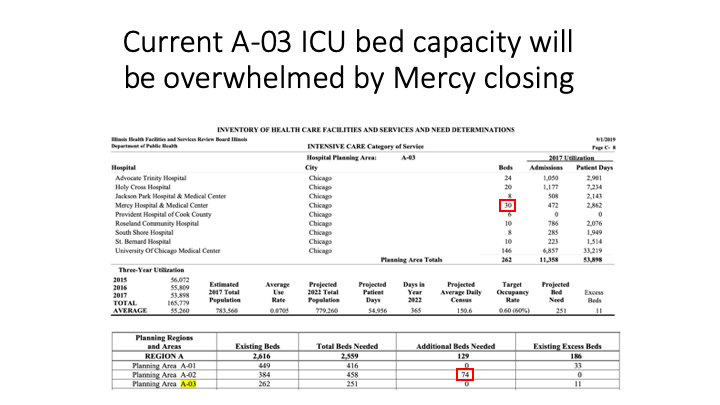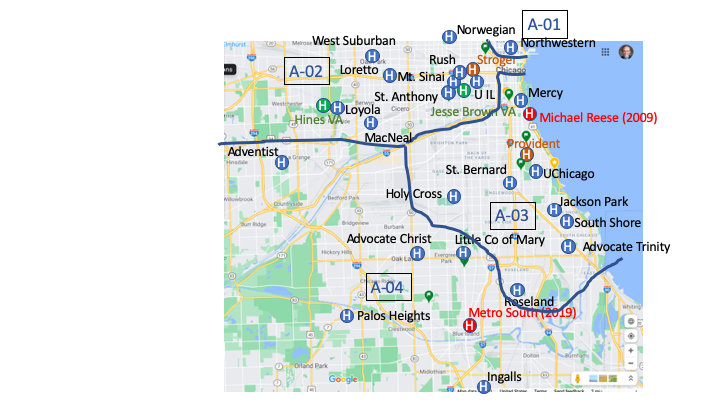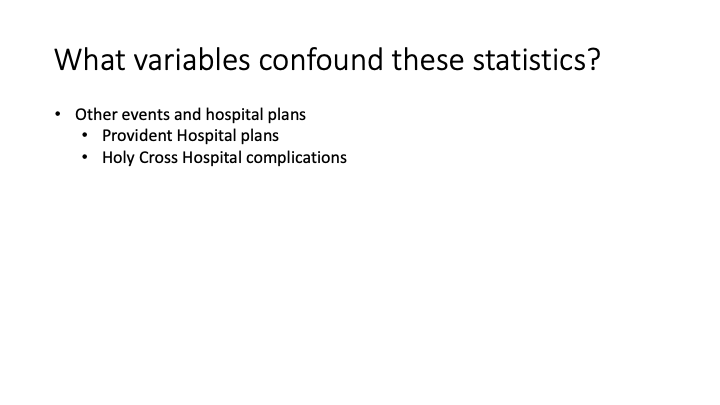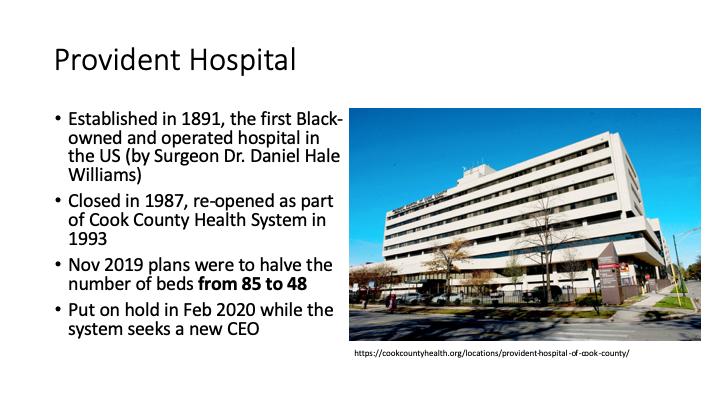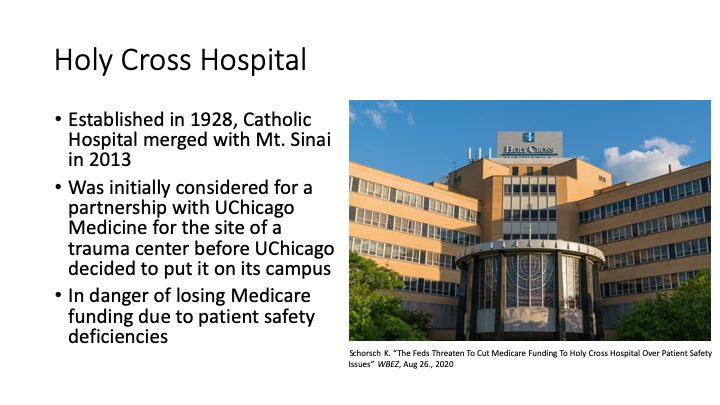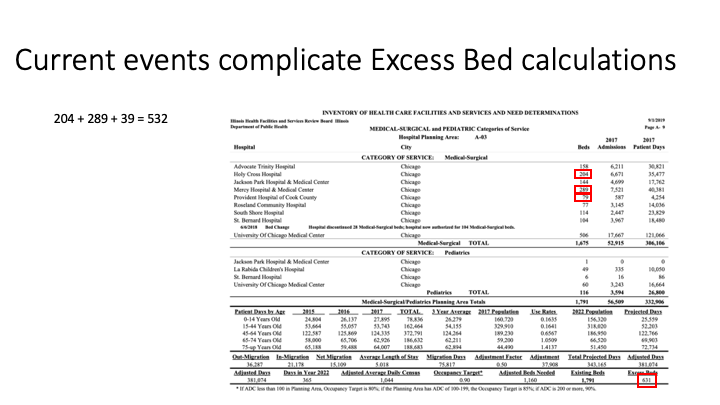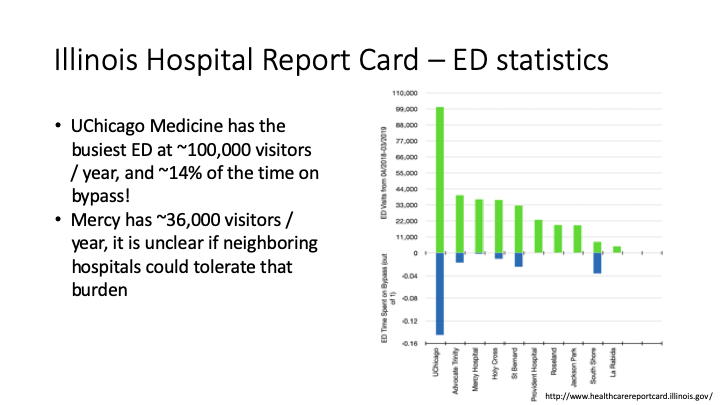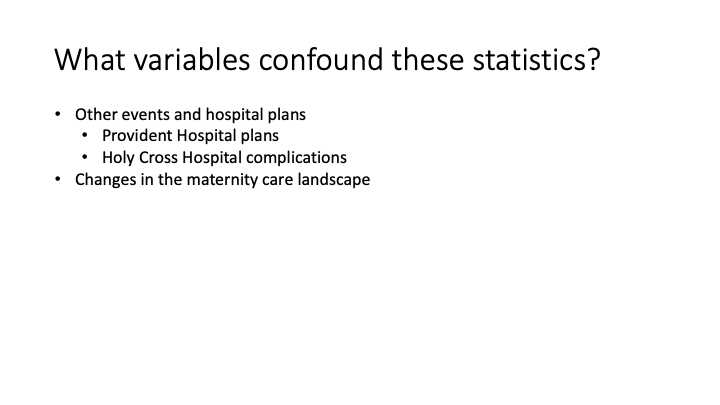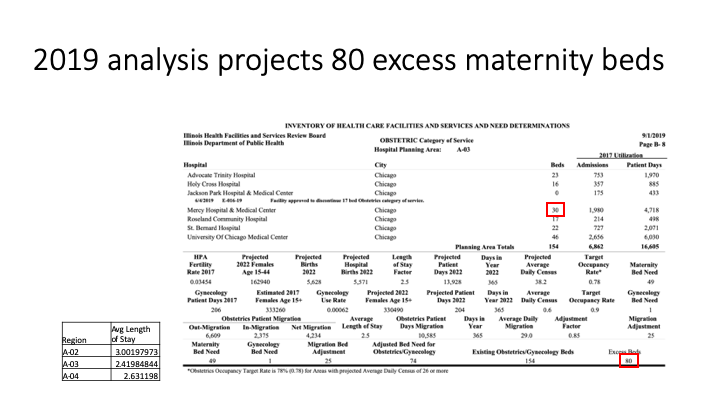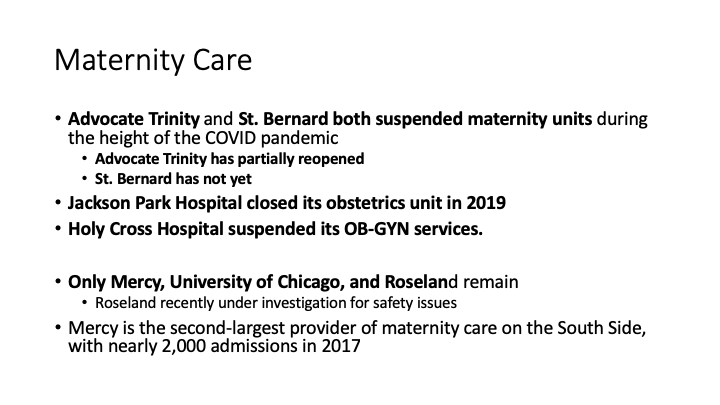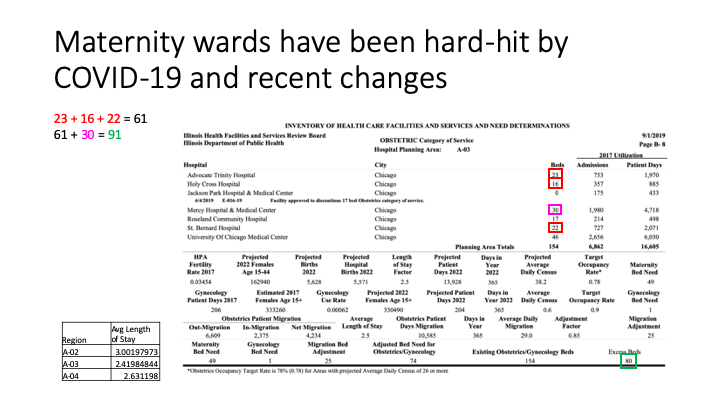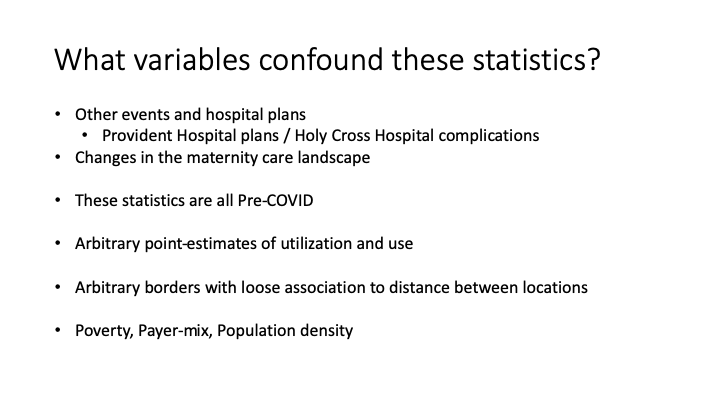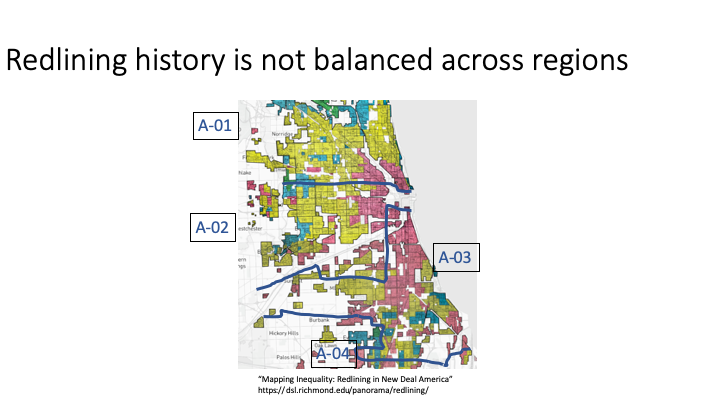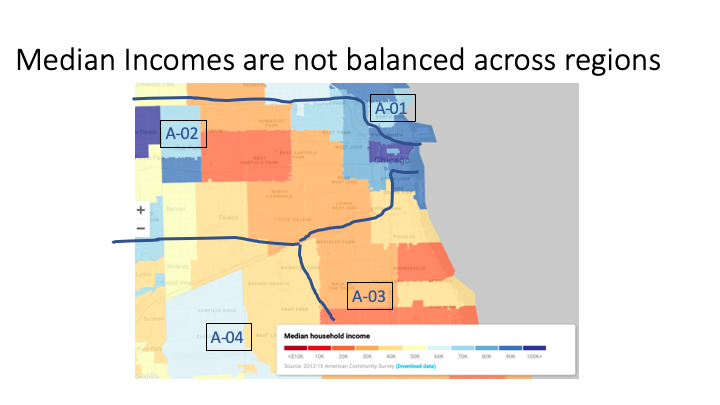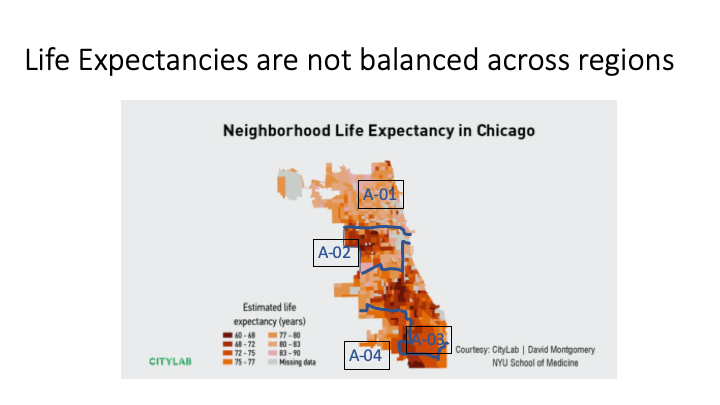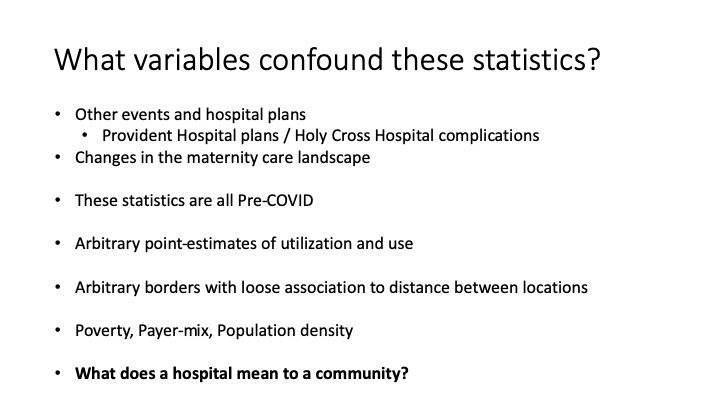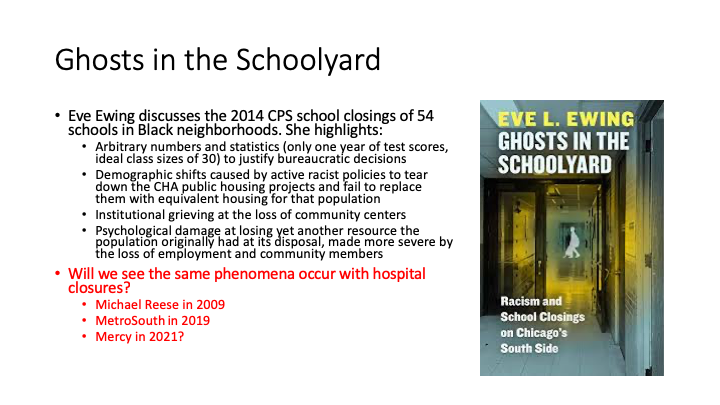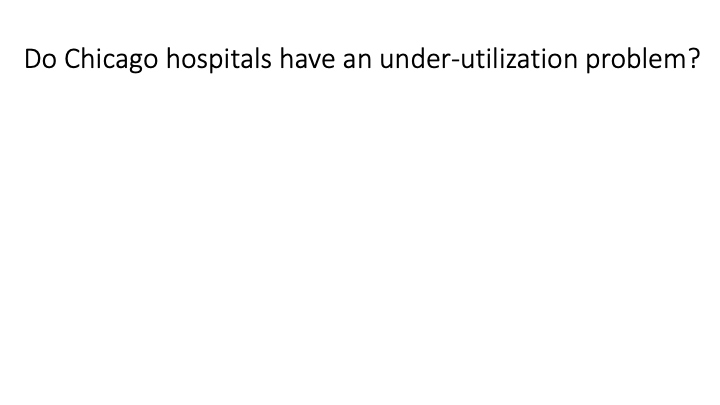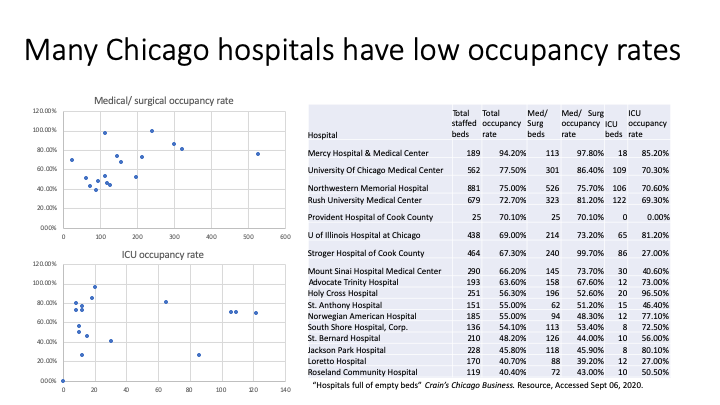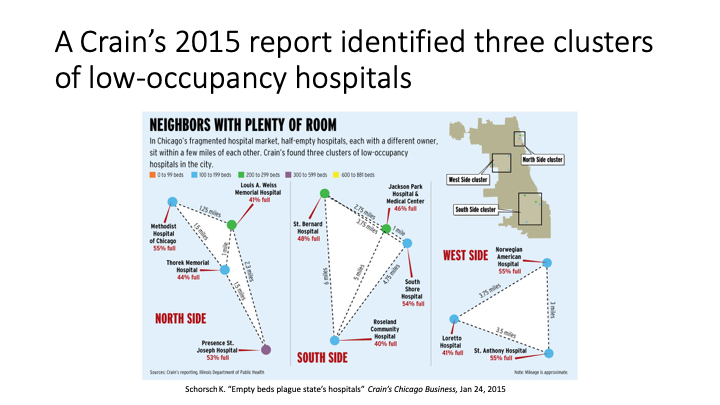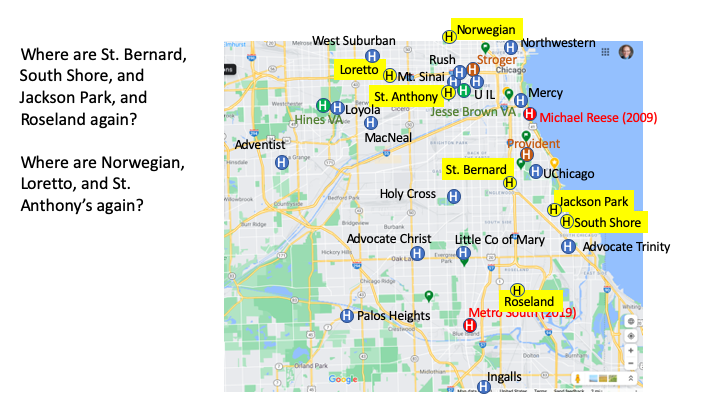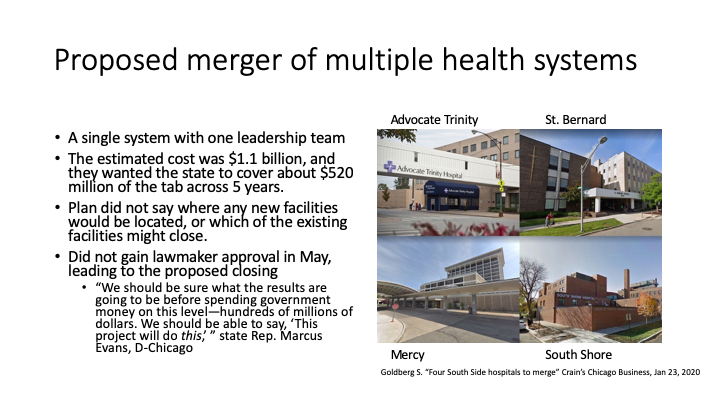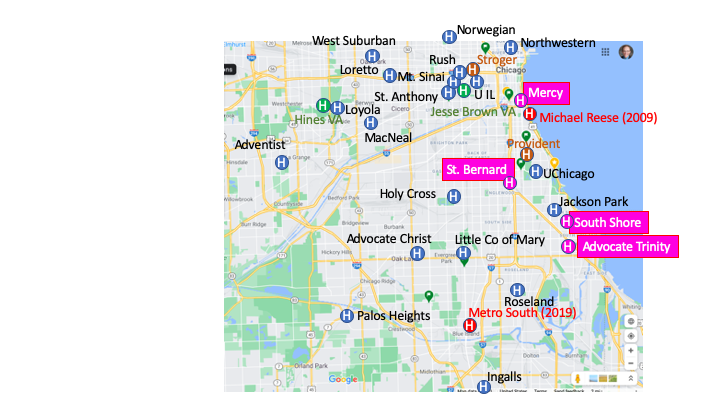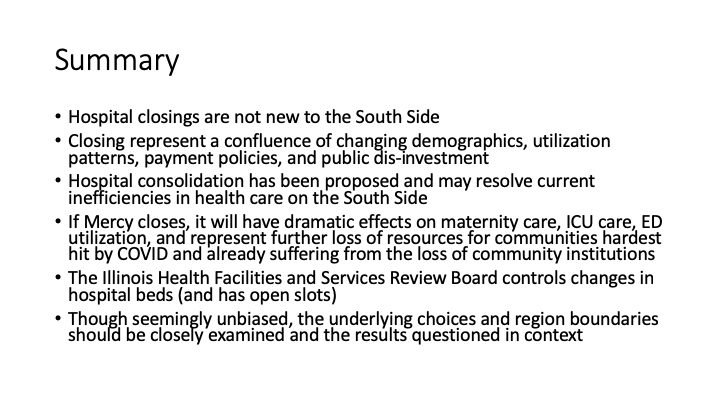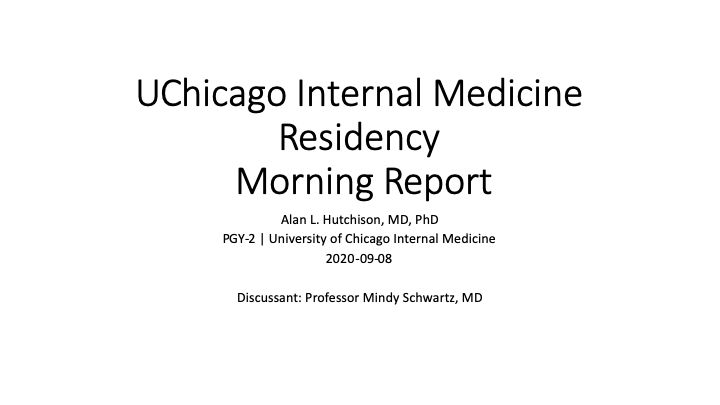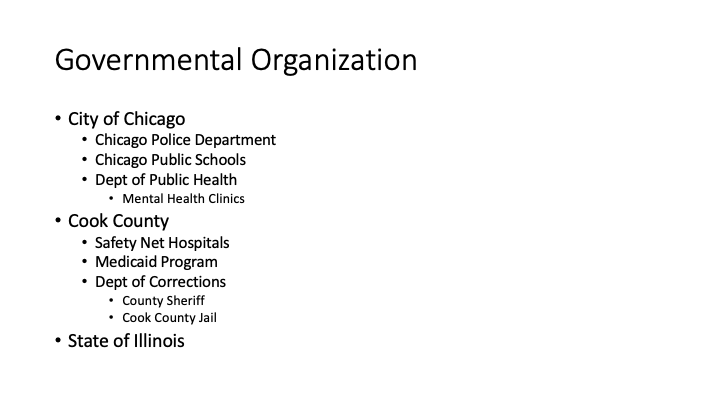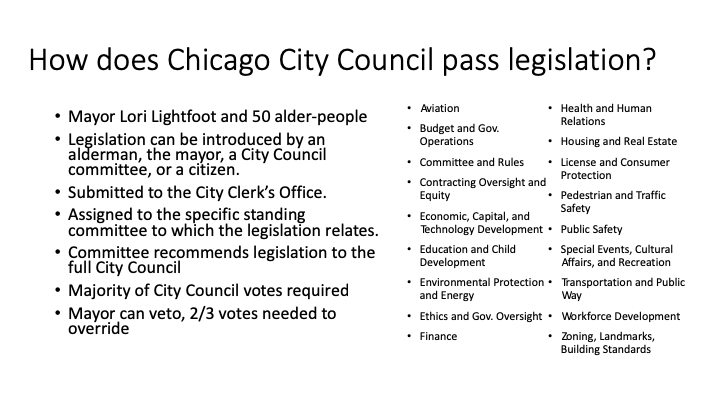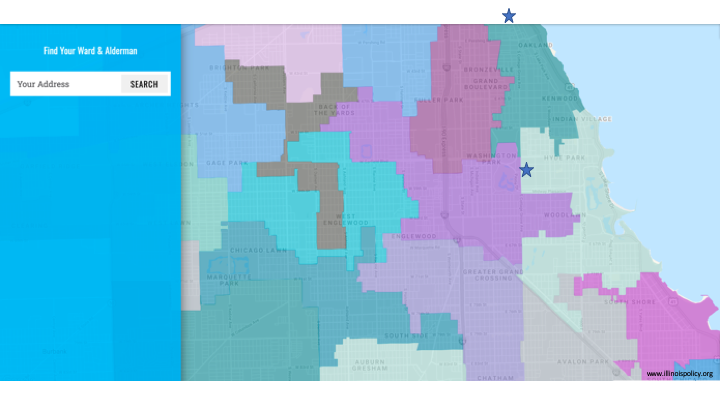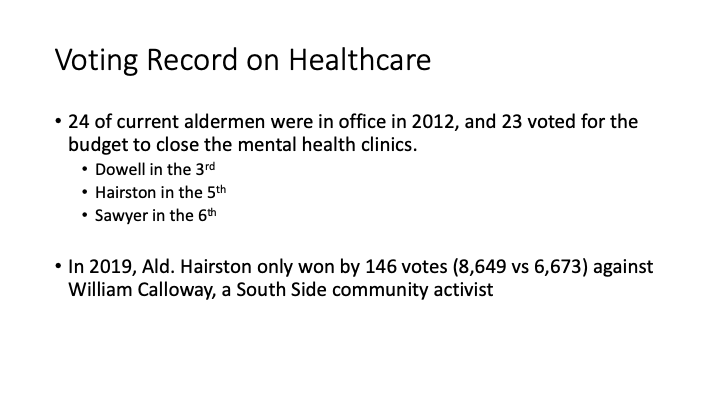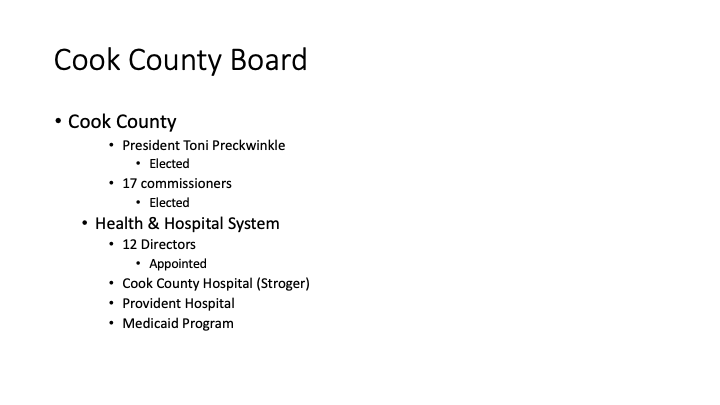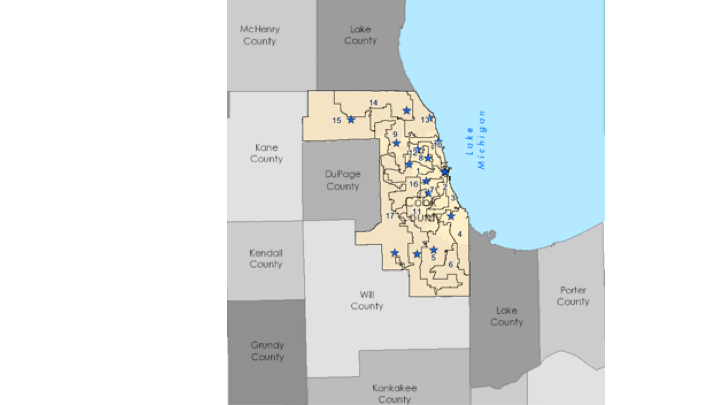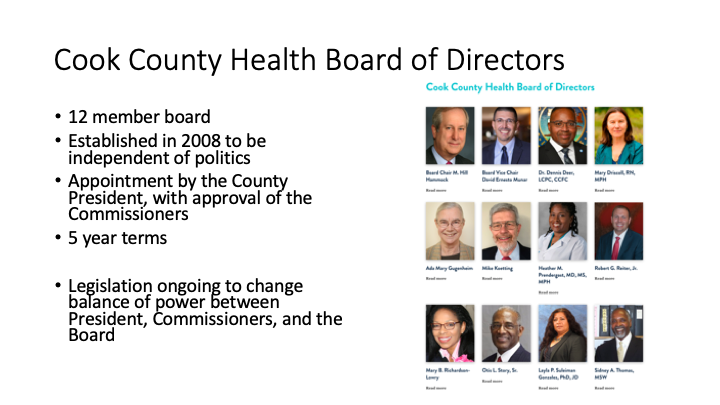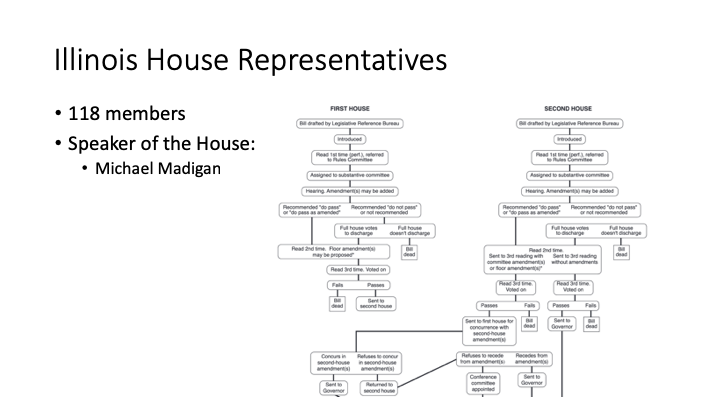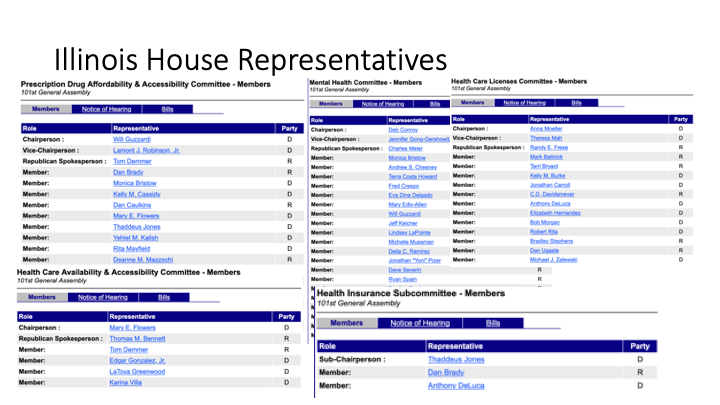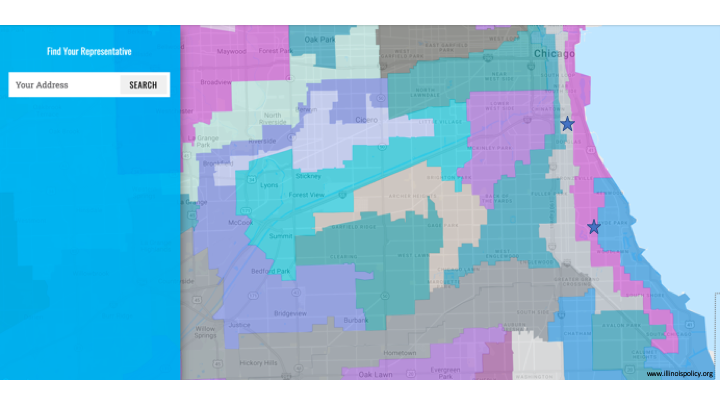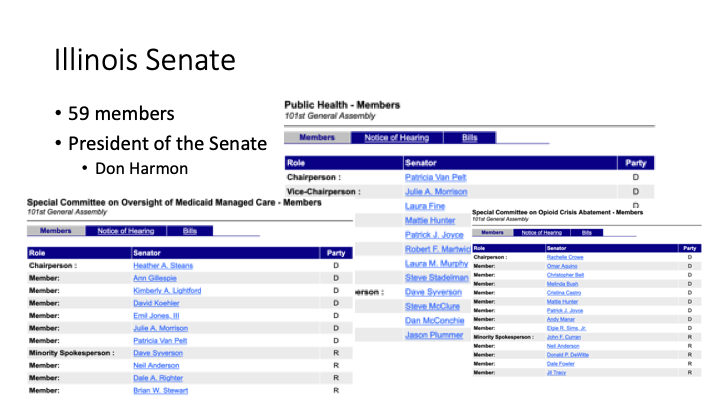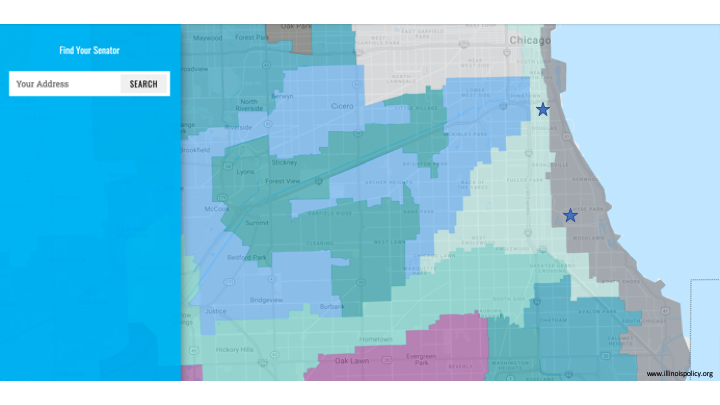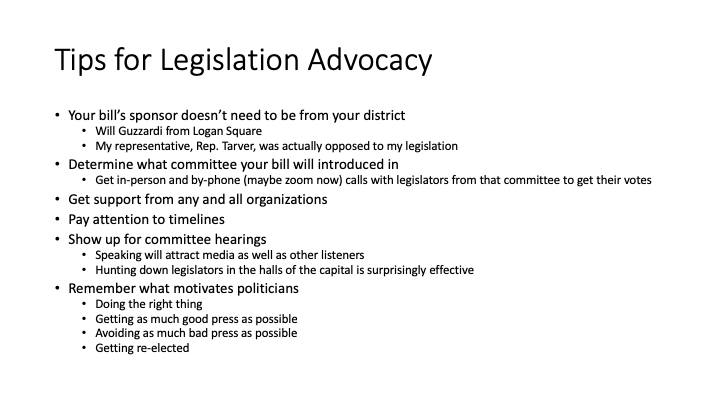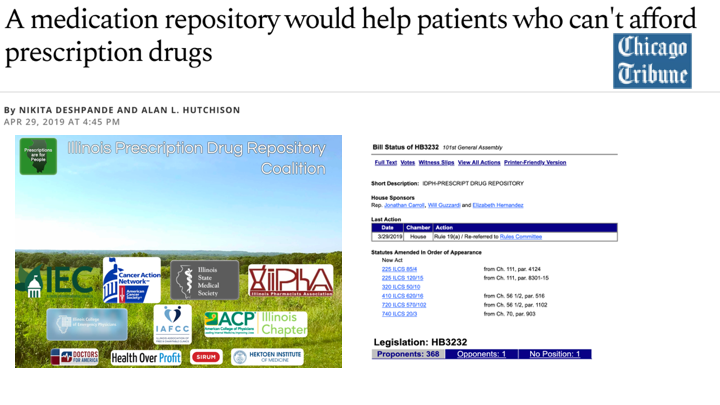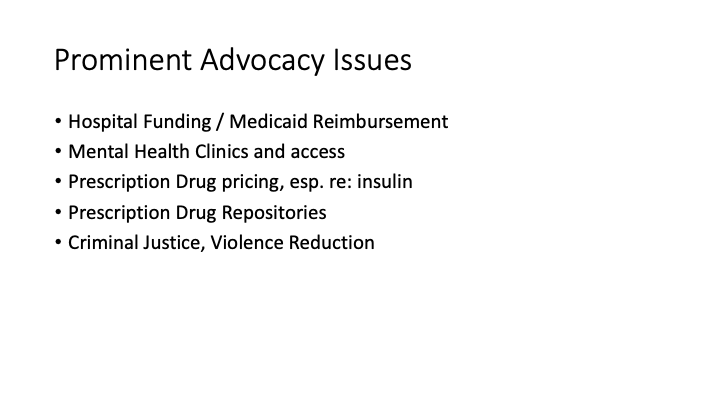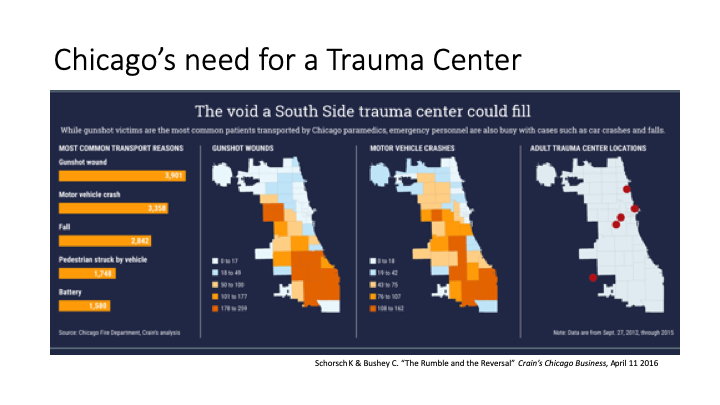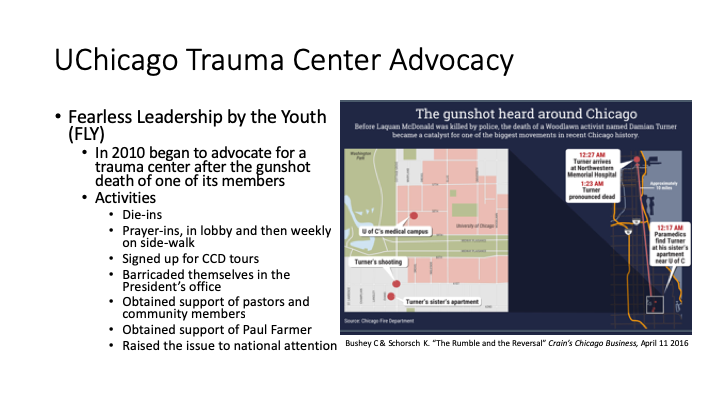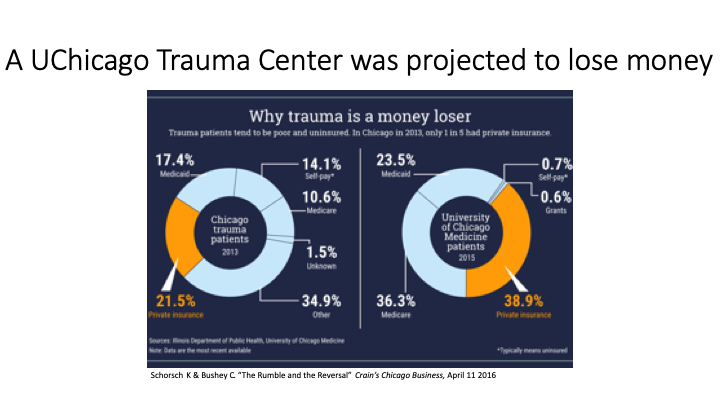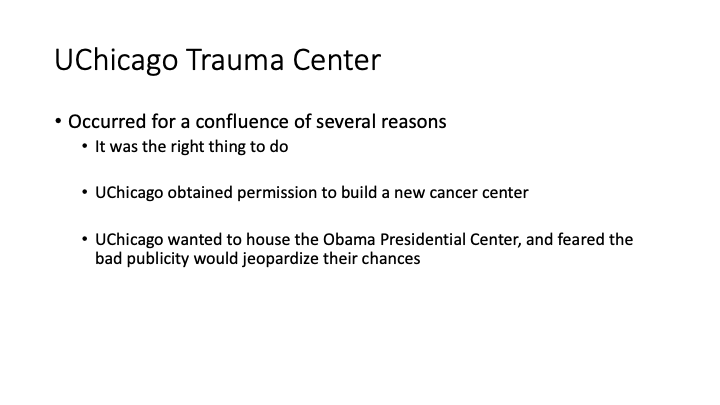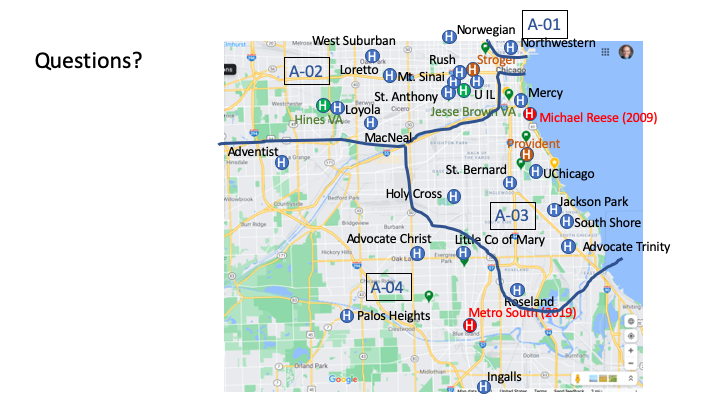@UChicagoMed IM Residency @medchiefs Morning Report is resident-led. I was able to follow up my MR on Homelessness & Chicago History with one on Chicago Hospitals & Advocacy, hopefully educational especially for our interns new to the South Side. Featuring @ms47_mindy!
I am not from the South Side of Chicago, and I am not a health care delivery expert, but I did the best research that I could for this presentation. I think it’s important to recognize those limitations going into my presentation.
This patient is based on many I have met: chronically ill, with their health care fragmented across multiple institutions.
We did this in two parts: the first I just asked for names of “outside hospitals” and then we clicked through each marker on the map to identify the actual location of the hospital. I mainly did this because I wanted to have a better understanding of where these hospitals were!
The faculty @UChicagoMed had close ties to Michael Reese Hospital, and I have heard many of them speak fondly of their time there. https://hekint.org/2017/02/23/th-rise-and-death-of-chicagos-michael-reese-hospital/
Notably, Ken Polonsky, President of @UChicagoMed and Dean of @UChiPrizkter, did his internal medicine residency at Michael Reese before his Endocrinology fellowship at UChicago!
Also notably (to me), my dad @HutchFACS did some of his @UChiPrizker medical school training at Michael Reese, and I found this ID among some medical hand-me-downs he gave me when I started medical school (sensitive information hidden by paper corner)
I couldn’t find clear objective data about the reasons for Michael Reese closing, but it seemed to be a combo of demographic shifts, decrease in philanthropy, privatization, & ultimately Chicago wanting the land for the Olympics, which countered any public interest in saving it.
Mercy used to partner with @medchiefs and @UChicagoMed for residency training, and notably @monicavelaw did parts of her training there!
In my last MR I went into detail about the shameful redlining history of the Home Owners Loan Corporation. I found the description of the red-lined neighborhood containing Michael Reese and Mercy Hospital to be informative here as well. https://dsl.richmond.edu/panorama/redlining/
Mercy is slated to close, as it has been losing money for several years now. Credit to @kschorsch and @steph_goldberg for several articles on this topic. • https://www.wbez.org/stories/doctors-lawmakers-protest-closing-chicagos-mercy-hospital/852bb774-5ff9-49d8-a0b4-19bc7a4d6282
• https://www.chicagobusiness.com/health-care/mercy-hospital-closing
• https://chicago.cbslocal.com/2020/07/29/activists-mercy-hospital-closing-will-create-health-care-desert-for-bronzeville/
• https://www.chicagobusiness.com/health-care/mercy-hospital-closing
• https://chicago.cbslocal.com/2020/07/29/activists-mercy-hospital-closing-will-create-health-care-desert-for-bronzeville/
In 2015, Mercy had one of the highest occupancy rates in Chicago. Horizontal axis is beds, Vertical axis is occupancy rate. From @CrainsChicago, @kschorsch reporting: • https://www.chicagobusiness.com/static/section/hospital-beds-database.html
The Illinois Health Facilities and Services Review Board decides with certificates of need if a hospital can open, close, expand, or contract. It was actually unclear to me from what I read where Mercy was in that process.
Notably, the Board has 4/9 vacancies on it! Seems inappropriate for such an important set of decision-makers. @GovPritzker should give me a call!
This board releases the “Inventory of Health Care Facilities and Services and Need Determinations”, which splits the states into Planning Areas and then determines the hospital bed needs for those areas, divided into Med/Surgical beds, ICU beds, and maternity beds.
Here’s those Planning Areas on top of our map of Chicago hospitals. Notably, the area around the loop including the @RushMedical, @UIHealth, Stroger, @NUFeinbergMed, and Mercy seems carefully split up to put Northwestern and Mercy in different regions than the others…
The Inventory uses admit data (from 2017!) from A-03 & extrapolates population change, future use, and migration from other areas to estimate the bed deficit/surplus for a given area. Notably, they assume an occupancy target of 90% (not much room for, say, a worldwide pandemic!).
Based on these assumptions and statistics, and the underlying logical framework they are using in this analysis, even with changing the migration length of stay (line 6) or occupancy target (line 7), A-03 does seem to have a bed surplus.
However, ICU bed capacity will be overwhelmed (I feel like every @medchiefs resident feels like ICU bed capacity is always overwhelmed @UChicagoMed) for A-03 if Mercy closes, and A-02 already has a substantial ICU bed deficit.
However, these statistics leave a lot of information out, which we'll explore in the reply thread to this one, where the morning report continues...
Continuation of the @medchiefs Morning Report on Chicago Hospitals and Advocacy, with what the Inventory of Health Care Facilities and Services and Need Determinations leaves out, here's the map of the regions again!
These statistics leave a lot of information out, including recent news about Provident Hospital and Holy Cross Hospital….
Provident Hospital: America’s first Black-owned and operated hospital (by Dr. Daniel Hale Williams). It is now run by Cook County, with initial on-hold plans to reduce the number of hospital beds it has. https://www.wbez.org/stories/cook-county-healths-latest-bet-a-new-modern-provident-hospital/3f2251c9-4420-4b87-a258-9131c57a39ce
https://www.wbez.org/stories/facing-uncertainty-cook-county-pauses-plans-for-new-provident-hospital/62fb8507-d361-4aee-b0e2-22c13b03bd99
https://www.wbez.org/stories/facing-uncertainty-cook-county-pauses-plans-for-new-provident-hospital/62fb8507-d361-4aee-b0e2-22c13b03bd99
Holy Cross, est. 1928, is currently being investigated for patient safety lapses that could jeopardize its Medicare funding. https://www.wbez.org/stories/the-feds-threaten-to-cut-medicare-funding-to-holy-cross-hospital-over-patient-safety-issues/056eee83-868b-47aa-8b01-97847b818695
Combining Mercy’s planned closure with this other information, the seemingly robust 631 excess beds in Area A-03 suddenly is a much smaller 99 beds, a margin of error >8%...
The Illinois Hospital Report Card shows that @UChicagoEM sees a massive number of patients/year, and spends >14% of time on bypass. Closing Mercy will increase this problem for all the hospitals on the South Side. http://www.healthcarereportcard.illinois.gov
The 2019 analysis (of 2017 data) projects an excess of 80 beds in A-03, but this number plummets once we start looking at recent events…
Recent obstetrics units closures at South Side hospitals leave only @UChicagoMed, Roseland, and Mercy as hospital delivery locations, though Advocate Trinity recently reopened some of their maternity beds.
https://www.chicagoreporter.com/south-sides-maternal-health-desert-poses-added-risks-for-black-women-during-pandemic/
https://www.wbez.org/stories/mercy-hospital-closure-could-hurt-expectant-mothers/238edefb-498c-4899-9070-7dc539e282d1
https://www.wbez.org/stories/women-have-few-options-for-giving-birth-on-the-south-side-two-midwives-want-to-change-that/e2f2a774-5cf9-4f41-a53f-4261aede5ec3
https://www.chicagoreporter.com/south-sides-maternal-health-desert-poses-added-risks-for-black-women-during-pandemic/
https://www.wbez.org/stories/mercy-hospital-closure-could-hurt-expectant-mothers/238edefb-498c-4899-9070-7dc539e282d1
https://www.wbez.org/stories/women-have-few-options-for-giving-birth-on-the-south-side-two-midwives-want-to-change-that/e2f2a774-5cf9-4f41-a53f-4261aede5ec3
Accounting for these current events, closing Mercy would devastated maternity care on the South Side, in an area where maternity deaths already are shamefully high.
The limited objectivity of the Review Board Inventory, in addition to not accounting for COVID(!) also fails to account for the arbitrariness of the borders separating Planning areas and the history of racism, exploitation, and dis-investment in Chicago communities.
In addition to carefully separating Northwestern & Mercy from (and vice versa) the medical campus, the impact of racist and exploitative Redlining is not balanced across planning areas; this disproportionately affects the South Side. https://dsl.richmond.edu/panorama/redlining/
Likewise, median incomes distributions of the regions are not balanced across area boundaries. https://richblockspoorblocks.com/
Importantly, life expectancy of the populations of the different areas have massive disparities among them.
https://cityhealthdashboard.com @CityLab @sarahsholder @dhmontgomery https://bloomberg.com/news/articles/
https://cityhealthdashboard.com @CityLab @sarahsholder @dhmontgomery https://bloomberg.com/news/articles/
In “Ghosts in the Schoolyard”, @eveewing discusses the community impacts & institutional grieving that occurred after 54 CPS schools closed. I am thinking more about the parallels with Michael Reese, MetroSouth, and Mercy’s potential closing in a similar way on the patients.
While I focused on data from the Illinois Health Facilities and Services Review Board, there has been other work investigating if Chicago Hospitals have an under-utilization problem. The following data is taken from
@CrainsChicago and @kschorsch.
@CrainsChicago and @kschorsch.
While in 2015 Mercy had relatively high occupancy rates, many other hospitals in Chicago, notably ones with fewer hospital beds, had much lower occupancy rates. https://www.chicagobusiness.com/static/section/hospital-beds-database.html
@CrainsChicago and @kschorsch identified three clusters of Chicago hospitals in close geographic proximity with low utilization in 2015. https://www.chicagobusiness.com/article/20150124/ISSUE01/301249988/health-care-insurance-changes-impact-illinois-hospital-capacity
I of course had my audience identify these hospitals on a label-less map before showing them where these hospitals were.
In 01/2020, 4 S Side hospitals proposed to merge into 1 health system, asking IL for $520 million/5 yrs to help. However, reps felt there were insufficient specifics about where new facilities would be placed to justify providing the funds. @steph_goldberg https://www.chicagobusiness.com/health-care/no-path-forward-four-hospital-merger
We’re not done yet, but I wanted to summarize this section before moving on. See the reply for the continuation of this presentation, where I pivot into discussing Illinois government and medical advocacy!
This is a continuation of the second of my Morning Report presentations @MedChiefs on the history and current events Chicago Hospitals and Advocacy, where we delve into discussing Illinois government and medical advocacy! Featuring @ms47_mindy!
There are 50 alder-people, who pass legislation that is introduced to various committees. The Mayor can veto, and can be overridden with ⅔ of the votes (though in Chicago sufficiently contentious legislation is usually compromised on before the initial passing vote).
We went over the alder-people in the wards surrounding UChicago Medicine: @5thWardChicago, @aldsophiaking, @AldPatDowell3rd, @J1Ramann, @RoderickTSawyer (notably, Chairman of the Committee on Health and Human Relations.), @AldermanHarris, @AldGregMitchell.
We touched on how some current alder-people voted for the shameful 2012 budget that removed 6/12 of the mental health clinics from Chicago, & how @5thWardChicago was decided by only 146 votes: our advocacy & votes for our patients should carry significant weight in the 5th Ward.
We identified the County Commissioners for districts around UChicago: @BillLowryFor3 , @Commdeerdis2(Chairman of the Health and Hospitals Committee), John P. Daley, and @CommStanMoore.
We discussed the governance of Cook County Health, including the professions of the Board of Directors, and the ongoing shifting balance of power between @ToniPreckwinkle and the Board. https://www.wbez.org/stories/preckwinkle-wants-new-power-over-cook-county-health/44b4baec-a119-4d97-9ff9-b6bf84c752b5
There are a number of House Committees regarding matters of health and of interest to health advocates.
House members surrounding UChicago: Curtis J. Tarver II, @RepKamBuckner, @LamontJRobinson (Rep for the District where Mercy is located), @SonyaMHarper, @RepThapedi, and Mary E. Flowers
Senators surrounding UChicago: @senpetersil (UChicago's senator), @SenMattieHunter (Mercy’s Senator), @senatorjacqui, @ElgieSims
Having some experience trying to get a bill passed in the Illinois House (see next slide) I wanted to share some tips about my experience. Shout-out to @RepGuzzardi39 for being a strong advocate for physicians and patients!
My recent advocacy work focused on legalized a prescription drug repository (see previous tweetorial), for which I wrote a Chicago Tribune Op-Ed with @nikitadeshpan and advocated with @EALindquist, @sweetchinchilla, @SIRUM. https://twitter.com/AlanLHutchison/status/1053370398958632960?s=20 https://www.ilrxdrugrepository.org/
I wanted to highlight some other potential advocacy issues that may be of interest to my colleagues.
With my remaining time, I wanted to touch briefly on the recent success of advocates and @UChicagoMed in bringing a new trauma center to the South Side. From magnificent reporting by @Claire_Bushey @kschorsch, and @CrainsChicago: https://www.chicagobusiness.com/static/section/trauma-power.html
https://www.chicagobusiness.com/static/section/trauma-protest.html
https://www.chicagobusiness.com/static/section/trauma-protest.html
Fearless Leadership by the Youth were fierce advocates for bringing a new trauma center to the South Side, galvanized by the death of Damian Turner.
Financially, @UChicagoMed establishing a new trauma center was projected to be a money loser.
However, as the articles explore, @UChicagoMed stepped up to become a nation-wide leader in trauma care, and the State of Illinois allowed @UChicagoMed to build a new cancer center, and local advocates joined in pushing for the Obama Presidential Center to come to the South Side.
I touched on a lot of points, but hoped to explore the health care needs of the South Side through the lens of Mercy’s potential closing, as well as the governmental structures and advocacy opportunities surrounding health care in Chicago.
Again, I benefited from @WBEZ
is my absolute favorite, and @chicagotribune,
@SunTimes, and @CrainsChicago
do quality reporting, but I also rely heavily on @HydeParkHerald, @southsideweekly, @chicagoreporter, and @BlockClubCHI for more local news on policy & advocacy
is my absolute favorite, and @chicagotribune,
@SunTimes, and @CrainsChicago
do quality reporting, but I also rely heavily on @HydeParkHerald, @southsideweekly, @chicagoreporter, and @BlockClubCHI for more local news on policy & advocacy
I started this 2-part @medchiefs MR series because I wanted to show my colleagues the terrible need for us to understand the exploitative and racist history whose legacy is our patients’ health, and the need for us to advocate for our patients to counter that legacy.

 Read on Twitter
Read on Twitter